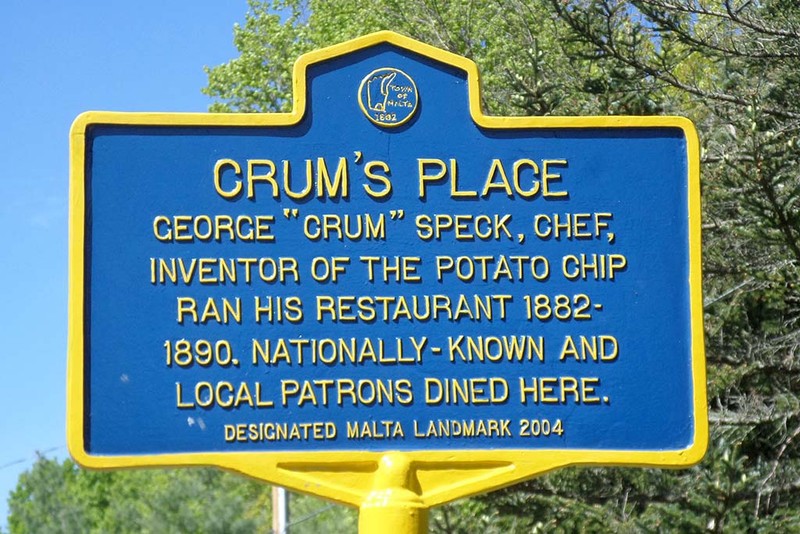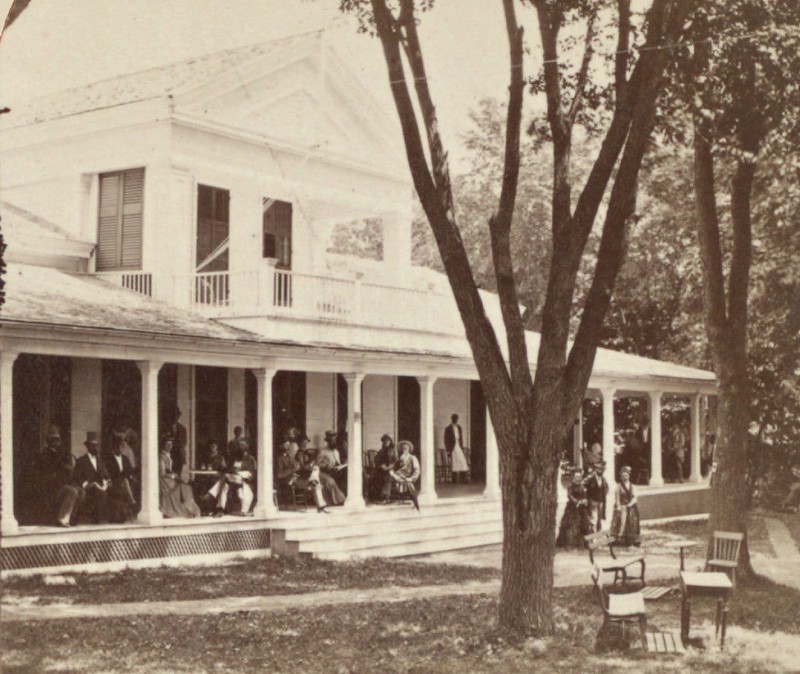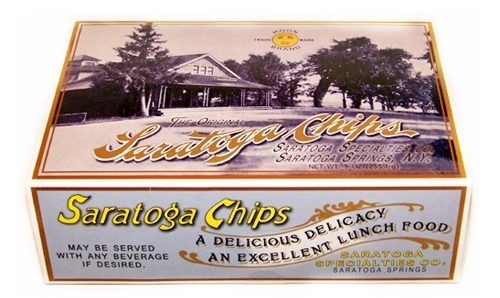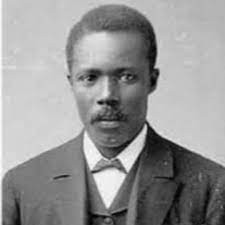Site of Crum's Place (Invention of potato chips)
Introduction
Text-to-speech Audio
Identified now by a historic marker, this site on Malta Street was home to Crum's Place, a small restaurant that holds a significant place in American food history as its owner is often credited as the inventor of potato chips. Not far from this location in the mid-1850s, African American chef George Crum perfected the culinary creation at Moon's Lake House, a small resort in Saratoga Springs. Crum developed the recipe for potato chips almost by accident, but when his "potato crunches" as he originally called them proved to be unexpectedly popular, he used the local fame to open his own restaurant here in 1860 and operated it until 1890. The historical marker references 1882 as the opening date, but later records indicated that Crum's restaurant was established much earlier and the year 1882 was significant as it corresponded with the completion of a new road that shortened the distance for many of his patrons who could enjoy a variety of dishes and every table was provided with a basket of potato chips, which were then served as a side dish.
Images
Historic marker identifying the location of Crum's Place

Moon's Lake House in Saratoga Springs

Original packaging of Saratoga Chips

George Crum

Backstory and Context
Text-to-speech Audio
George Crum was born George Speck in 1824 in Saratoga Lake, New York. Speck's father was African American and a jockey who raced in local derbies. His mother was Native American. His father raced under the name "Crum," which George Speck would later adopt as his last name. As a young man, Crum worked as a guide in the Adirondack Mountains, and eventually realized that he had a natural ability as a cook.
When Crum was 29, he was hired at Cary Moon's Lake House, a resort along Saratoga Lake near Saratoga Springs. The resort catered primarily to wealthy New Yorkers who vacationed in the area as well as those who were in the area to build second homes. According to local lore, one of the resort's wealthy patrons was Commodore Cornelius Vanderbilt, and stories that cannot be verified but have been passed down over the years indicate that Vanderbilt took a liking to Crum as well as his cooking and would often make special meal requests. Whether the actual customer Crum created potato chips for was Vanderbilt, the story remains that a customer of great wealth and fame ordered French fries from Crum. This dish was already known in the United States, and once again, local lore ties that to another famous American, former President Thomas Jefferson. At that time, french fries were intentionally cut thick and cooked in a manner that made them more soggy than crisp. On this particular day, the diner thought Crum's french fries were too thick and soggy and repeatedly sent them back to the kitchen. Frustrated with the continued request to revise the dish, Crum reportedly sliced potatoes into thin slivers, fried them to a crisp, and salted them generously in hopes of sending a less than subtle message about the propriety of continuing to request modifications to a well-established menu item. Instead, the frustrated chef's crispy creation was an instant hit.
Crum thought the "potato crunches," as they were originally known, would be inedible. But the chips, which were originally meant to be a side dish rather than a snack, soon became popular with diners. They became so popular with diners that they were added to the menu of Moon's Lake House, listed as Saratoga Chips. Eventually, their popularity grew to the extent that they were packaged and sold locally, then eventually throughout New England.
In 1860, Crum decided to use his skills as a cook at his own restaurant, and he opened Crum's Place. Every table was provided with a basket of potato chips, and Crum's fried potato slices were, for many years, a treat for the wealthy of upstate New York. In the 1920s, however, Herman Lay discovered Crum's delicacy, which had never been patented, and began mass-producing them and selling them in the South. With Lay's capacity to market and distribute the snack, potato chips soon became a nationwide snack.
There is considerable disagreement about whether Crum actually pioneered potato chips, and neither Crum nor those who wrote about Saratoga's early history made this claim. Potatoes were a ubiquitous part of the American diet and there are numerous references to crispy thin fried potatoes that predate Crum's time as a chef. Interestingly, Crum's connection to the invention of potato chips emerged after his death and his sister later claimed that the dish was her invention. According to her version, the potato chip was born when she accidentally dropped a thinly sliced potato into a hot pan of grease. There is likely a degree of truth and a degree of fiction in every potato chip origin story, and the fact that many would later credit Crum with the invention is almost certainly due to George Crum's well-documented role in popularizing potato chips at restaurants in this area which led to Lay's discovery of the snack. The site of his former restaurant is identified by a historic marker but is on private property which is currently occupied.
Cite This Entry
Woodham, Rebecca and Clio Admin. "Site of Crum's Place (Invention of potato chips)." Clio: Your Guide to History. April 17, 2022. Accessed April 21, 2025. https://theclio.com/entry/148727
Sources
Schulz, Dana . 163 Years Ago an Upstate Chef Accidentally Invented Potato Chips , 6sqft. August 24th 2016. Accessed April 16th 2022. https://www.6sqft.com/163-years-ago-an-upstate-chef-accidentally-invented-potato-chips/.
Madden, Shirley . Honoring Black History Month: George Crum , The Edwardsville Intelligencer. February 25th 2021. Accessed April 16th 2022. https://www.theintelligencer.com/news/article/HONORING-BLACK-HISTORY-MONTH-George-Crum-15978294.php.
Reed, Creighton . George Crum, 1824-1914, Black Past . June 6th 2020. Accessed April 16th 2022. https://www.Blackpast.org/african-american-history/people-african-american-history/george-crum-1824-1914/#:~:text=The%20popular%20narrative%20is%20that,hot%20frying%20pan%20by%20accident..

